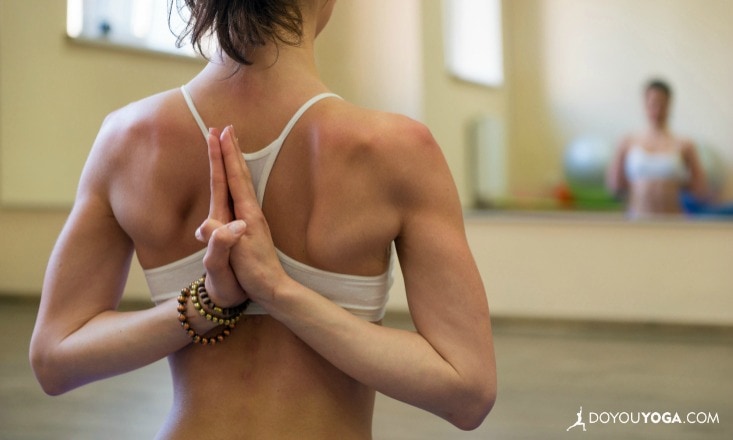Yoga classes can sometimes feel really busy. There’s the teacher’s chatter, the sounds of other people breathing (sometimes heavy), the music, heat perhaps — not to mention the distraction of the cute guy in the front row.
Maybe the class is crowded and you’re positioned a little too close to someone else’s mat for your liking (unless of course you’re next to that cute guy in the front row).
The collective energy of a busy class can be appealing — helping to keep your own energy levels up and creating yogic "good vibrations." At the same time you don’t want to be taking on any negative vibes in the room by feeling someone else’s pain in a posture or their frustration with life in general.
If your day has been super busy or you simply want to zone out in order to zone in, then here are a few things to focus on.
1. Find Your Drishti
You can think of a drishti as a focal point in front of you, particularly in balance postures, that varies with each asana (for example, a fixed gaze over the top of your pointed middle finger in Warrior II), but try to think of a drishti more broadly as being a focus on yourself that you can maintain throughout class.
If mirrors are available, then you can softly stare into your own eyes or third eye — not to critique or judge or even to admire yourself, simply to concentrate your energy and attention. A lot of teachers will ask you to consider finding your drishti at the beginning of class, and this goes hand in hand with dropping the ego and not comparing yourself to anyone in the room.
Contrary to popular belief, staring at yourself is not vain if you’re trying to look inside yourself!
2. Listen For Your Breath
Of course you’ll be told to do this and probably be reminded of it ad nauseam throughout class because breath focus is important not only to help you get in and out of postures, but to draw you away from ego distractions and the distractions of others in the class.
If you practice Ujjayi breathing, then breath becomes an audible and rhythmic wave that can help you sustain focus even in challenging postures.
3. Listen Just For Alignment Cues
We yoga teachers like to list the benefits of postures, sound like we know what we’re talking about in Sanskrit, remind you to breathe over and over again, and wax lyrical with yoga philosophy. But sometimes all you really need to hear are the alignment cues.
This focus, even when you are familiar with the asanas, will take you deeper into body awareness and so deeper into your own true zone. Don’t worry about disrespecting your teacher by selective listening — sometimes your attention will be firmly focused on what they say, but other times you really need to find your own space.
4. If It’s a Hot Class, Notice the Sweat
Sometimes you just want to ignore the beads rolling off your nose or down your arms and legs, so that you can get comfortable with the discomfort. But focusing on those same beads of sweat brings you into greater body awareness and so zones you in.
5. Focus on One Aspect of the Practice
Perhaps you choose to make strength or maybe balance your "theme" for the class. Of course balance will naturally grab your attention in standing balance postures, arm balances, and inversions, but you can bring a focus on balance to any asana.
Most people aren’t symmetrical so it’s about looking for equilibrium in your body — is your weight distributed evenly in Tadasana (Mountain Pose), do your sitz bones come closer to one heel than the other when sitting back in Child’s Pose, does one shoulder open up more in Trikonasana (Triangle Pose)?
Or maybe you choose to focus on one area of your body — for example, just on your lower lumbar spine and give it your attention throughout class. Narrow your attention and you will naturally zone inwards.
6. Listen to the Music
Sometimes listening to a class soundtrack and making it your own can take you inwards and away from the distractions of the room as well as any annoying thoughts in your head.
7. Have a Conversation with Yourself (Not Out Loud of Course!)
Repeat a mantra, affirmation, or intention, or silently talk yourself through the class. As long as you try to avoid thinking about bills that need paying or what to have for dinner and avoid any judgments about your practice, then you can be your own cheer squad and wise counsel.
When we come to Savasana at the end of a class it is all about zoning in and finding your inner self — but with the right focus you can find that sense of stillness all the way through your practice — that’s why we call yoga "moving meditation."


